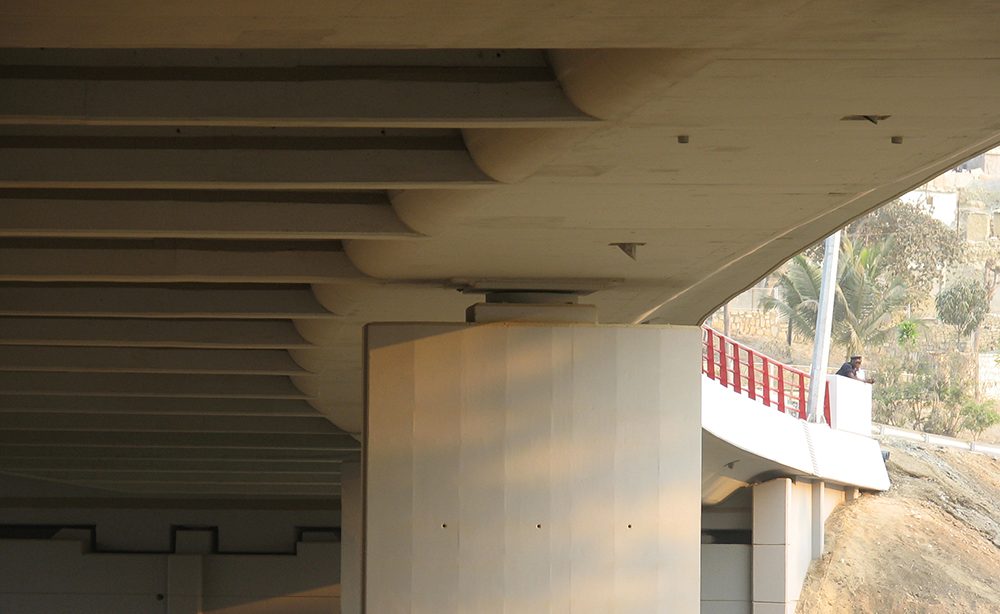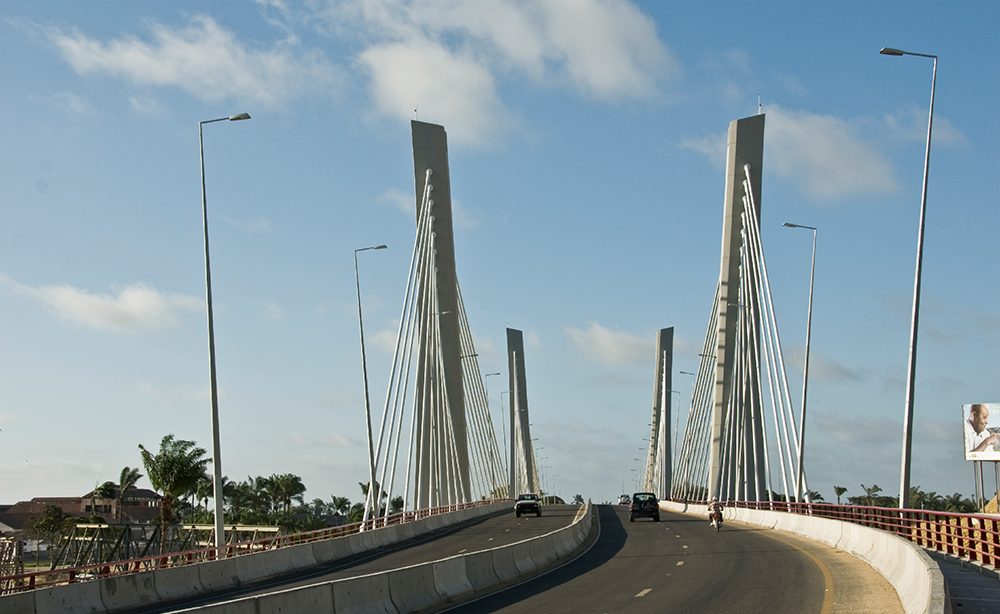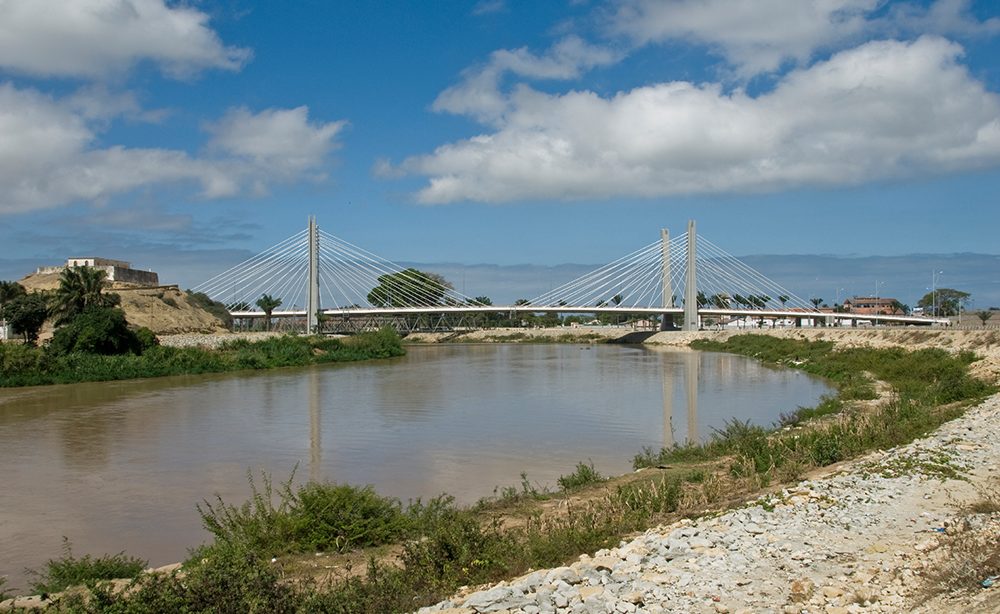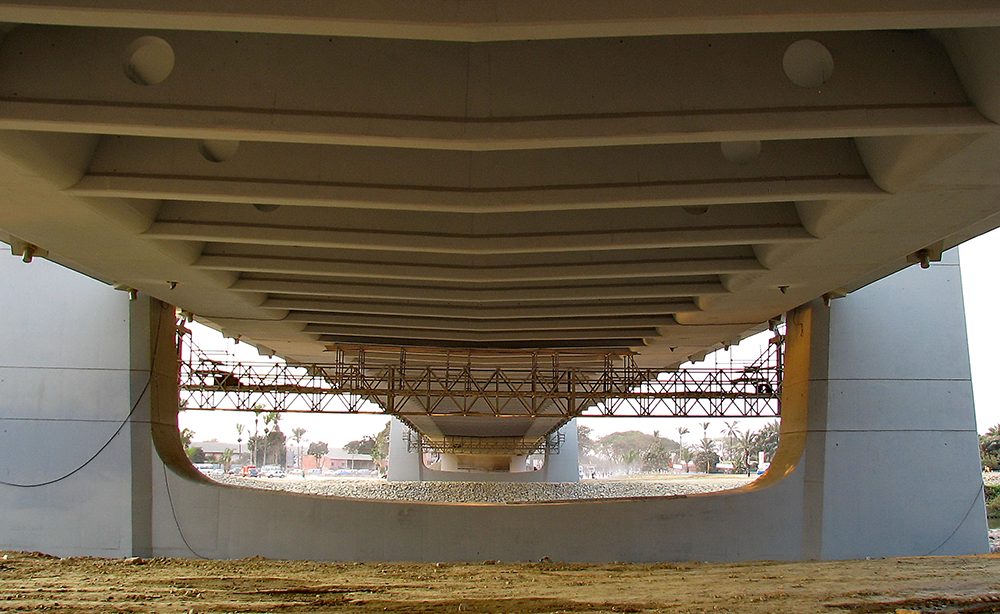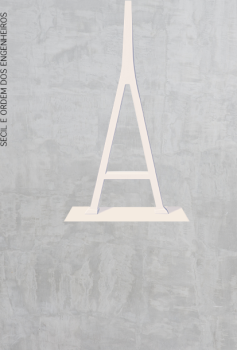This bridge is part of the Highway between Benguela and Lobito and it crosses the Catumbela River, approximately 7km north from the Atlantic coast of Angola.
The bridge is a full suspension cable stayed bridge with a semi-fan arrangement of stays. The main span of the bridge is 160m long and the two side spans are both 64m long. The approach viaducts have multiple 30m spans. Together with the approach viaducts, this bridge forms a 438m long, totally continuous structure with only two expansion joints located at the abutments.
The concrete pylons are “U” shaped and approximately 50m high. The foundation soils are composed of alluvial deposits of loamy sand and clay with variable thickness, up to a depth of 45m over limestone bedrock. The foundation piles have a diameter of 1.20m.
The 24.50m maximum width deck is a two hollow-beam prestressed concrete girder. The two beams are connected transversely by the reinforced concrete top slab and by prestressed cross-beams placed every 4m.
The stays are arranged in two planes and are constituted by bundles of individual prestressed steel strands. They connect to the pylons crossing them through saddles, with the exception of the first three stays where traditional anchorages are used. The deck anchorages are positioned at 8m intervals except for the four backstay cables which are spaced at 4m.
The structure was entirely cast “in situ”.
The construction of the bridge began in July 2007 and was completed in July 2009, having been attributed the Secil Engineering Prize of 2011.



